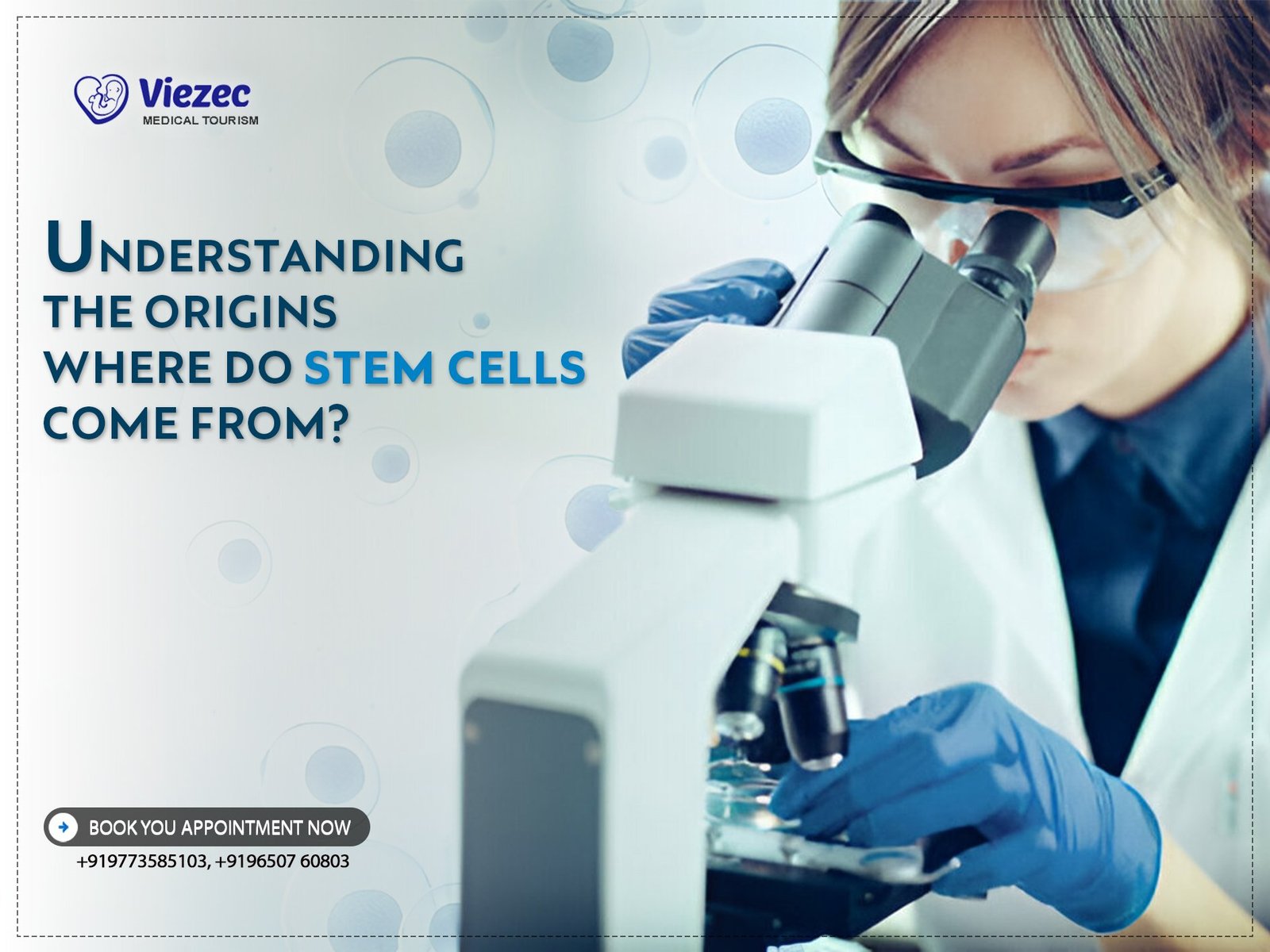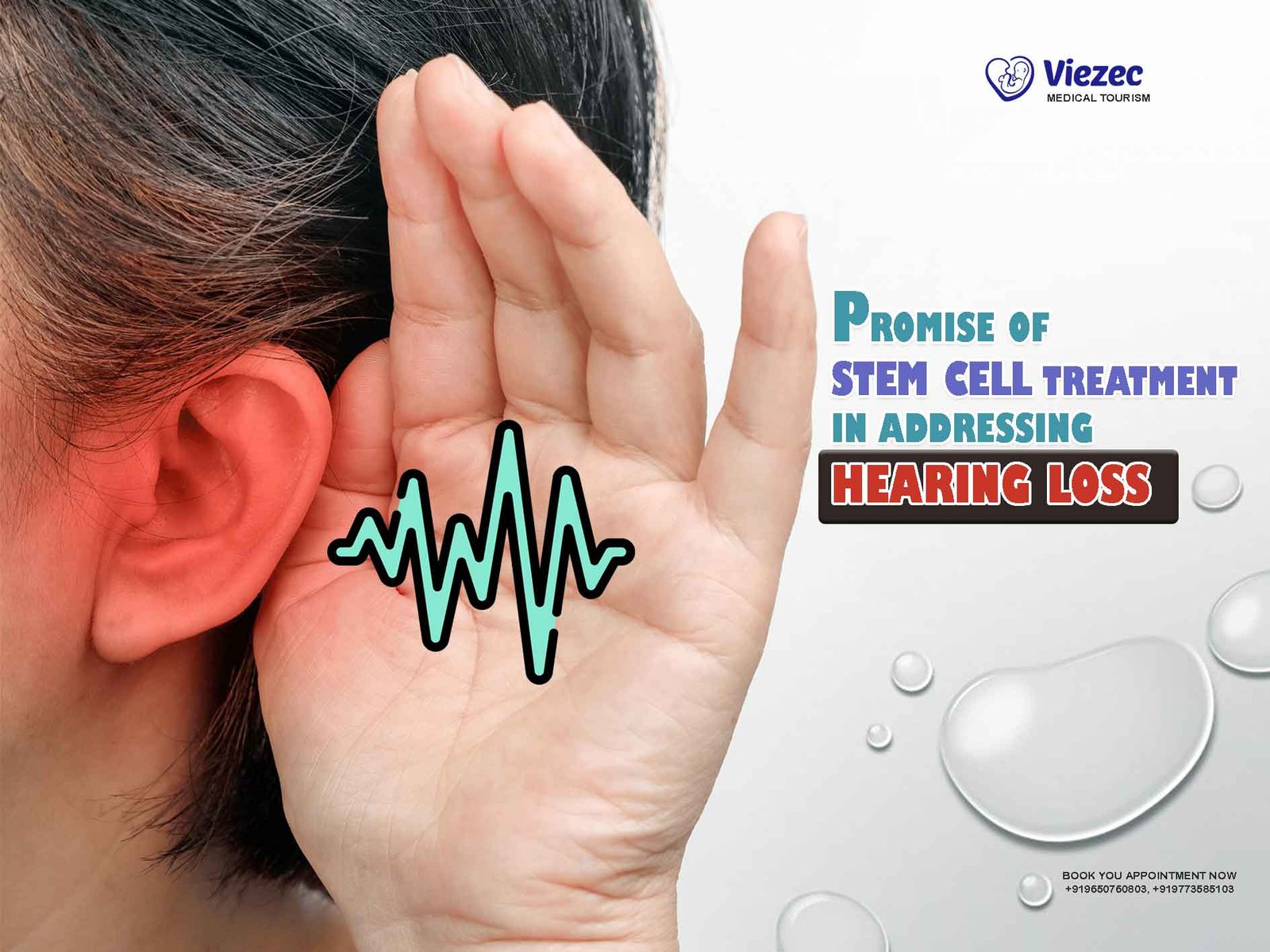Stem cells are unique cells capable of developing into different cell types in the body. They have the remarkable potential to differentiate into various specialized cells and can self-renew, making them a crucial part of regenerative medicine. Stem cells play a vital role in growth, development, and tissue repair. There are two main characteristics that define stem cells: their ability to self-renew through cell division and their potential to differentiate into specialized cell types. This dual capability makes them a powerful tool in medical research and therapy, offering hope for treating a wide range of diseases and injuries.
Types of Stem Cells
Stem cells can be classified into several types based on their origin and potential.
Embryonic Stem Cells
Embryonic stem cells (ESCs) are derived from early-stage embryos. These cells are pluripotent, meaning they can differentiate into nearly any cell type in the body. ESCs are obtained from the inner cell mass of a blastocyst, a structure formed in the early stages of embryonic development. Due to their high pluripotency, ESCs hold significant promise for regenerative medicine and research, although their use raises ethical concerns regarding the destruction of embryos.
Adult Stem Cells
Adult stem cells, also known as somatic or tissue-specific stem cells, are found in various tissues throughout the body. Unlike embryonic stem cells, they are multipotent, meaning they can differentiate into a limited range of cell types related to their tissue of origin. Examples include hematopoietic stem cells from bone marrow, which can become blood cells, and mesenchymal stem cells from fat tissue, which can differentiate into bone, cartilage, and fat cells. Adult stem cells are crucial for the maintenance and repair of tissues.
Induced Pluripotent Stem Cells (iPSCs)
Induced pluripotent stem cells (iPSCs) are adult cells that have been genetically reprogrammed to an embryonic stem cell-like state. This reprogramming is achieved by introducing specific genes that revert the cells to a pluripotent state, allowing them to differentiate into any cell type. iPSCs offer the advantages of embryonic stem cells without the ethical issues, as they do not involve the use of embryos. They hold great potential for personalized medicine, disease modeling, and drug testing.
Importance and Potential of Stem Cells in Medicine
Stem cells are invaluable in medical research and therapy due to their unique properties. They offer the potential to regenerate damaged tissues and organs, providing treatment options for conditions such as Parkinson’s disease, spinal cord injuries, and heart disease. Stem cells are also used in drug discovery and testing, offering a more accurate model for human diseases. Furthermore, their ability to model diseases at the cellular level helps researchers understand disease mechanisms and develop new treatments. The ongoing advancements in stem cell research continue to open new possibilities in regenerative medicine and beyond.
Embryonic Stem Cells
Origin of Embryonic Stem Cells
Fertilized Embryos
Embryonic stem cells are derived from fertilized embryos at the blastocyst stage. These embryos are typically produced through in vitro fertilization (IVF), a process where eggs are fertilized by sperm outside the body. The resulting embryos are cultured for a few days until they reach the blastocyst stage, which contains an inner cell mass rich in pluripotent stem cells. These cells are then isolated and cultured to create embryonic stem cell lines for research and therapeutic purposes.
Blastocysts
The blastocyst is a crucial structure in early embryonic development. It forms about five days after fertilization and consists of an outer layer of cells called the trophoblast and an inner cell mass. The inner cell mass contains the pluripotent stem cells that can develop into any cell type in the body. By carefully extracting these cells, scientists can create embryonic stem cell lines that provide a renewable source of pluripotent cells for research and potential therapies.
Methods of Harvesting Embryonic Stem Cells
In Vitro Fertilization (IVF) Techniques
Embryonic stem cells are commonly harvested through IVF techniques. Eggs and sperm are combined in a laboratory setting to create embryos, which are then cultured to the blastocyst stage. At this point, the inner cell mass is extracted and cultured to establish stem cell lines. These techniques ensure a consistent and controlled environment for deriving pluripotent stem cells, enabling their use in various research and therapeutic applications.
Ethical Considerations and Controversies
The use of embryonic stem cells raises significant ethical considerations. The primary ethical issue revolves around the destruction of embryos, which some view as the destruction of potential human life. This has led to debates and varying regulations worldwide regarding the use of embryonic stem cells. Ethical considerations also include concerns about the consent of donors and the potential for commercial exploitation. Balancing the scientific potential of these cells with ethical principles remains a complex challenge in the field.
Applications and Research
Regenerative Medicine
Embryonic stem cells hold immense promise for regenerative medicine. Their ability to differentiate into any cell type makes them ideal for repairing or replacing damaged tissues and organs. Research is ongoing to develop therapies for conditions such as diabetes, heart disease, and neurodegenerative disorders using these cells. The potential to create patient-specific tissues and organs could revolutionize the field of transplantation, reducing the risk of rejection and the need for immunosuppressive drugs.
Disease Modeling and Drug Testing
Embryonic stem cells are also invaluable for disease modeling and drug testing. By differentiating these cells into specific cell types, researchers can create models of human diseases at the cellular level. This allows for a better understanding of disease mechanisms and the development of targeted treatments. Additionally, stem cell-derived cells can be used to screen potential drugs for efficacy and safety, improving the drug development process and reducing the reliance on animal models.
Adult Stem Cells
Sources of Adult Stem Cells
Bone Marrow
Bone marrow is a rich source of adult stem cells, particularly hematopoietic stem cells (HSCs). These cells can differentiate into various blood cells, including red blood cells, white blood cells, and platelets. Bone marrow transplants, which involve the transfer of HSCs, are commonly used to treat blood disorders such as leukemia and lymphoma. The ability of these stem cells to regenerate the blood system makes them a critical resource in clinical therapies.
Peripheral Blood
Peripheral blood also contains hematopoietic stem cells, although in lower quantities compared to bone marrow. Advances in medical technology have enabled the mobilization of HSCs from the bone marrow into the bloodstream, from where they can be collected through a process called apheresis. Peripheral blood stem cell transplants are less invasive than bone marrow transplants and are increasingly used in clinical settings to treat various hematological conditions.
Adipose Tissue
Adipose tissue, or fat tissue, is a source of mesenchymal stem cells (MSCs). These cells have the potential to differentiate into bone, cartilage, and fat cells. MSCs are easily obtainable through liposuction procedures and are being explored for their regenerative capabilities in treating orthopedic injuries, cardiovascular diseases, and autoimmune disorders. Their abundance and ease of access make adipose-derived stem cells a valuable resource in regenerative medicine.
Dental Pulp
Stem cells can also be found in the dental pulp of teeth, particularly in the pulp of baby teeth and wisdom teeth. These dental pulp stem cells (DPSCs) are capable of differentiating into various cell types, including neurons, osteoblasts, and chondrocytes. Research is ongoing to explore their potential in regenerative dentistry and the treatment of neurodegenerative diseases. The non-invasive collection method from extracted teeth adds to their appeal for therapeutic use.
Characteristics and Potency
Multipotency vs. Pluripotency
Adult stem cells are typically multipotent, meaning they can differentiate into a limited range of cell types related to their tissue of origin. In contrast, embryonic stem cells are pluripotent and can become nearly any cell type. This difference in potency affects their potential applications. While multipotent stem cells are effective in tissue-specific therapies, pluripotent stem cells offer broader possibilities for regenerative medicine and disease modeling.
Role in Tissue Regeneration
Adult stem cells play a crucial role in the body’s natural healing processes. They are responsible for maintaining and repairing tissues by replacing damaged or dead cells. For example, hematopoietic stem cells regenerate the blood system, while mesenchymal stem cells contribute to the repair of bone and cartilage. Understanding the mechanisms of tissue regeneration can help develop new therapies for a wide range of conditions, from injuries to degenerative diseases.
Clinical Uses and Therapies
Hematopoietic Stem Cell Transplantation
Hematopoietic stem cell transplantation (HSCT) is a well-established therapy for treating blood cancers such as leukemia and lymphoma, as well as other hematological disorders. This procedure involves the transplantation of HSCs from a donor’s bone marrow or peripheral blood into a patient. The transplanted stem cells can reconstitute the patient’s blood system, offering a potential cure for these life-threatening conditions. Advances in HSCT continue to improve patient outcomes and expand its applications.
Treatment of Degenerative Diseases
Adult stem cells are being explored for the treatment of various degenerative diseases, including osteoarthritis, cardiovascular diseases, and neurodegenerative disorders. For example, mesenchymal stem cells are used in clinical trials to regenerate cartilage in osteoarthritis patients, while cardiac stem cells are being investigated for repairing damaged heart tissue after a heart attack. These therapies aim to restore function and improve the quality of life for patients suffering from chronic degenerative conditions.
Induced Pluripotent Stem Cells (iPSCs)
Discovery and Development
Induced pluripotent stem cells (iPSCs) were first discovered in 2006 by Shinya Yamanaka and his team. They demonstrated that adult cells could be reprogrammed to a pluripotent state by introducing a set of specific genes. This groundbreaking discovery provided a new source of pluripotent cells without the ethical issues associated with embryonic stem cells. iPSCs have since become a powerful tool in regenerative medicine, disease modeling, and drug discovery, earning Yamanaka the Nobel Prize in 2012.
Process of Reprogramming Adult Cells
Key Transcription Factors
The reprogramming of adult cells into iPSCs involves the introduction of key transcription factors that induce pluripotency. The original factors identified by Yamanaka are Oct4, Sox2, Klf4, and c-Myc, often referred to as the Yamanaka factors. These transcription factors reset the gene expression of adult cells, transforming them into a state similar to embryonic stem cells. Research continues to optimize the reprogramming process, exploring alternative factors and methods to improve efficiency and safety.
Techniques and Efficiency
Reprogramming techniques have evolved significantly since the initial discovery of iPSCs. Methods include viral vector-mediated gene delivery, non-viral techniques such as plasmid transfection, and chemical approaches. Each technique has its advantages and challenges in terms of efficiency, safety, and potential for clinical application. Ongoing research aims to enhance the reprogramming process, making it more efficient and reducing the risk of genetic abnormalities in the resulting iPSCs.
Advantages and Challenges
Patient-Specific Therapies
One of the major advantages of iPSCs is their potential for patient-specific therapies. Since iPSCs can be derived from a patient’s own cells, they can be used to generate tissues and organs that are genetically matched, reducing the risk of immune rejection. This personalized approach holds promise for a wide range of applications, from regenerative medicine to the development of tailored treatments for genetic diseases. Patient-specific iPSCs offer a new frontier in precision medicine.
Safety and Genetic Stability
Despite their potential, iPSCs face challenges related to safety and genetic stability. The reprogramming process can introduce genetic mutations, and the use of certain reprogramming factors, such as c-Myc, has been associated with an increased risk of tumor formation. Researchers are working to address these issues by developing safer reprogramming methods and rigorously assessing the genetic stability of iPSCs. Ensuring the safety of iPSC-based therapies is crucial for their clinical translation.
Current Research and Future Directions
Research on iPSCs is advancing rapidly, with numerous studies exploring their potential applications. Current research focuses on improving reprogramming techniques, understanding the mechanisms of pluripotency, and developing iPSC-based disease models. Future directions include the use of iPSCs for tissue engineering, regenerative medicine, and the development of new therapies for genetic and degenerative diseases. The continued progress in iPSC research promises to unlock new possibilities in medical science and therapy.
Umbilical Cord Stem Cells
Collection and Storage
Cord Blood Banking
Umbilical cord blood is a rich source of hematopoietic stem cells (HSCs) and is collected immediately after birth. Cord blood banking involves the collection and storage of these cells for potential future use. There are two types of cord blood banking: public and private. Public banks store donated cord blood for use by anyone in need, while private banks store cord blood for potential use by the donor’s family. Cord blood banking offers a valuable source of stem cells for treating various blood disorders and other conditions.
Public vs. Private Banking Options
Public cord blood banks operate on a donation basis, making stored units available for patients in need through a registry. This option supports a broader community and can save lives through matched donations. Private cord blood banks, on the other hand, store cord blood for exclusive use by the donor’s family, providing a potential resource for personalized therapies. Both options have their advantages, and the choice depends on individual preferences and circumstances.
Characteristics and Benefits
Rich Source of Hematopoietic Stem Cells
Cord blood is a particularly rich source of hematopoietic stem cells, which can differentiate into various blood cells. These stem cells are less mature than those found in bone marrow, offering greater proliferative capacity and a lower risk of graft-versus-host disease in transplants. This makes cord blood an excellent resource for treating hematological disorders, such as leukemia and lymphoma, and for use in regenerative medicine.
Less Invasive Collection Method
The collection of umbilical cord blood is a non-invasive and painless procedure that poses no risk to the mother or newborn. It is performed immediately after birth, making it an easily accessible source of stem cells. This contrasts with the more invasive methods required to collect stem cells from bone marrow or peripheral blood, making cord blood collection an attractive option for stem cell banking and therapeutic use.
Clinical Applications
Treatment of Blood Disorders
Cord blood stem cells are primarily used in the treatment of blood disorders, including leukemia, lymphoma, and sickle cell anemia. These cells can reconstitute the blood and immune system, offering a potential cure for these conditions. Cord blood transplants are increasingly recognized as an effective alternative to bone marrow transplants, particularly for patients who cannot find a matched donor.
Emerging Therapies in Regenerative Medicine
Beyond their use in treating blood disorders, cord blood stem cells are being explored for various regenerative medicine applications. Research is investigating their potential in treating conditions such as cerebral palsy, type 1 diabetes, and autoimmune diseases. The unique properties of cord blood stem cells, including their immune-modulatory effects and ability to differentiate into multiple cell types, make them a promising resource for developing new therapies.
Ethical and Legal Considerations
Ethical Debates Surrounding Stem Cell Research
Embryonic Stem Cell Research Ethics
The use of embryonic stem cells raises significant ethical debates due to the destruction of embryos involved in their derivation. Opponents argue that this process destroys potential human life, while proponents highlight the potential medical benefits and the use of surplus embryos from IVF procedures that would otherwise be discarded. Balancing these ethical concerns with scientific progress remains a contentious issue, influencing policies and regulations worldwide.
Use of iPSCs and Adult Stem Cells
In contrast to embryonic stem cells, the use of iPSCs and adult stem cells is generally considered less ethically controversial. Since these cells do not involve the destruction of embryos, they are viewed as more acceptable by many ethical standards. However, ethical considerations still exist regarding the consent of donors, the potential for genetic manipulation, and the commercial exploitation of stem cell technologies. Ensuring ethical practices in the use of all stem cell types is essential for public trust and scientific integrity.
Regulatory Frameworks
International Guidelines and Policies
International guidelines and policies play a crucial role in regulating stem cell research and therapy. Organizations such as the International Society for Stem Cell Research (ISSCR) provide guidelines to ensure ethical and scientific standards. These guidelines cover aspects such as the derivation and use of stem cells, clinical trials, and the commercialization of stem cell products. Harmonizing international policies helps facilitate collaboration and the safe advancement of stem cell research.
Country-Specific Legislation
Different countries have varying legislation regarding stem cell research and therapy. While some countries have stringent regulations, others have more permissive frameworks. For example, the United States has specific restrictions on federal funding for embryonic stem cell research, while countries like the United Kingdom have more liberal policies. Understanding these differences is crucial for researchers and clinicians working in the global landscape of stem cell science.
Public Perception and Education
Addressing Misconceptions
Public perception of stem cell research is influenced by various factors, including ethical debates, media coverage, and misinformation. Addressing misconceptions and providing accurate information is essential to foster informed public opinion. Educational initiatives can help demystify stem cell science, highlighting its potential benefits and addressing ethical concerns. Engaging with the public through transparent communication can build trust and support for stem cell research.
Promoting Informed Decision Making
Promoting informed decision-making involves providing patients, donors, and the public with comprehensive and accurate information about stem cell research and therapies. This includes understanding the risks and benefits of different stem cell types, the ethical implications, and the regulatory environment. Informed decision-making empowers individuals to make choices that align with their values and circumstances, contributing to the ethical advancement of stem cell science.









